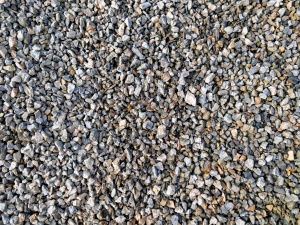Difference between revisions of "Choker layer"
Jump to navigation
Jump to search
Dean Young (talk | contribs) |
Dean Young (talk | contribs) |
||
| Line 1: | Line 1: | ||
[[File:Gravel.jpg|thumb|medium sized granular, free from fines]] | [[File:Gravel.jpg|thumb|medium sized granular, free from fines]] | ||
| − | In [[bioretention]] systems a choker layer of ≥ 100 mm depth is the recommended method to prevent migration of finer [[filter media]] into the underlying | + | In [[bioretention]] systems a choker layer of ≥ 100 mm depth is the recommended method to prevent migration of finer [[filter media]] into the underlying [[Reservoir gravel|storage reservoir aggregate]]. |
| − | These same mid sized granular materials are recommended for use in [[Stormwater planter]] underdrains and may be useful in the fine grading of foundations courses for [[permeable paving]]. | + | These same mid-sized granular materials are recommended for use in [[Stormwater planter]] underdrains and may be useful in the fine grading of foundations courses for [[permeable paving]]. |
Suitable materials include: | Suitable materials include: | ||
Revision as of 01:02, 11 July 2020
In bioretention systems a choker layer of ≥ 100 mm depth is the recommended method to prevent migration of finer filter media into the underlying storage reservoir aggregate. These same mid-sized granular materials are recommended for use in Stormwater planter underdrains and may be useful in the fine grading of foundations courses for permeable paving.
Suitable materials include:
- High performance bedding (HPB)
- Clean, angular aggregate screened to between 6 and 10 mm. Widely available and designed specifically for drainage applications. Free from fines by definition.
- HL 6
- Is a clean, angular aggregate screened between 10 and 20 mm. Free from fines by definition.
- Pea Gravel
- Rounded natural aggregate, screened between 5 and 15 mm, and washed free from fines.
In most scenarios, a geotextile layer is unnecessary and has been associated with rapid decline and clogging in some circumstances.
